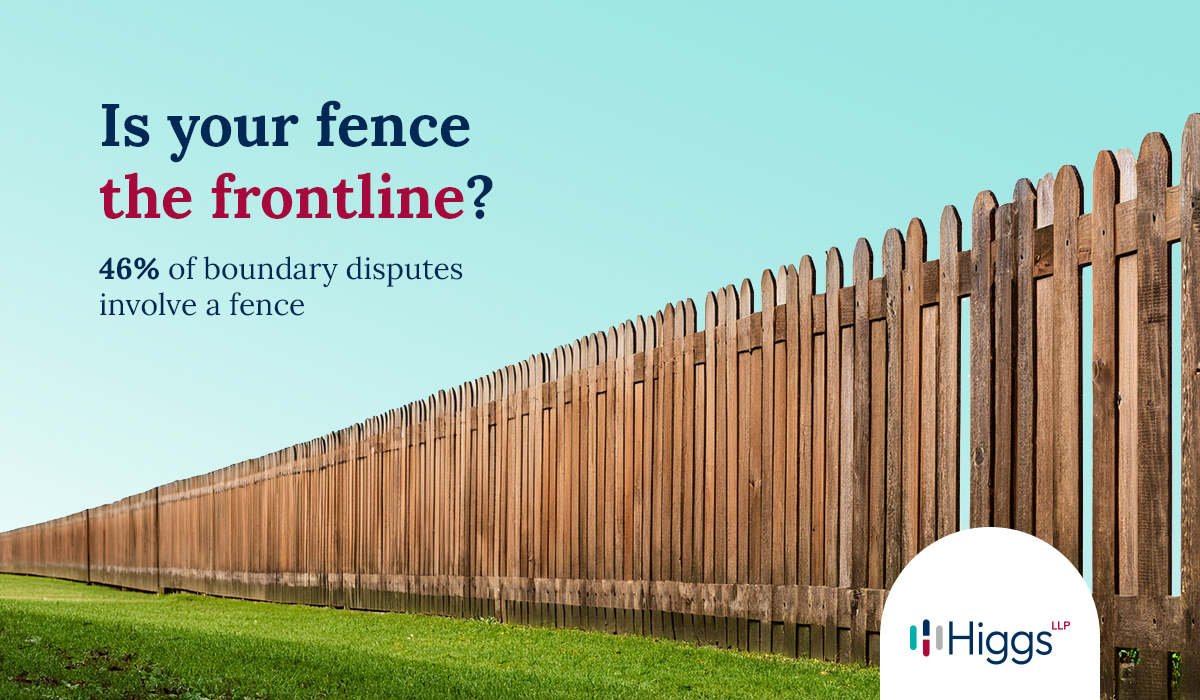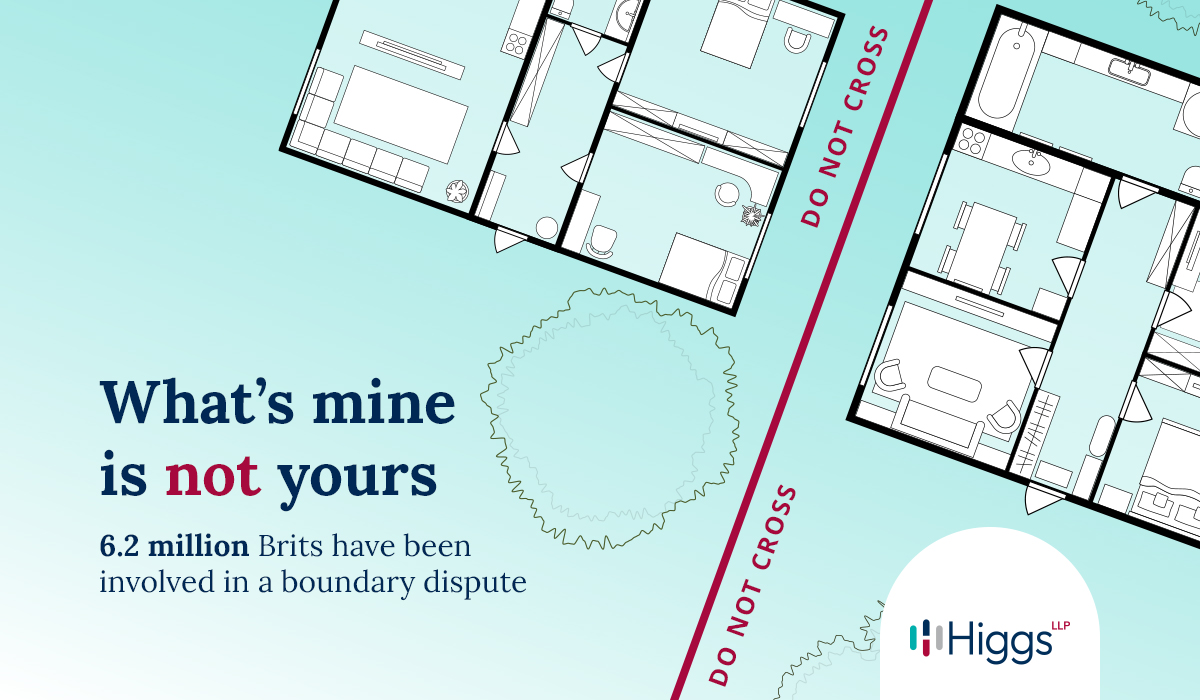Neighbours—what a wonderful thing. They lend you their lawnmowers, keep an eye on your post when you’re away, and sometimes even offer a friendly chat over the fence. But what happens when those neighbourly bonds start to fray, or worse—were never there to begin with?
It turns out that everything isn’t quite so peaceful in British neighbourhoods. Between 2019 and 2024, there have been 258,177 completed boundary agreements through HM Land Registry [1] and, with 56% of our own property dispute enquiries being about boundaries, it seems Britons have forgotten the age-old advice to “Love thy neighbour.”
To explore the reality of Great British boundary battles and gather insight into the most and least neighbourly neighbourhoods, we surveyed 500 Brits who have faced these disputes to reveal the surprising insights behind our ongoing neighbourly conflicts.
Which region has the most boundary disputes?
Our survey revealed an estimated 6.2 million Brits have been in boundary disputes with a neighbour. When we dive into the data, it’s clear that London tops the list for boundary disputes. The capital accounted for 19% of property disagreements, and when analysed per capita, this could suggest an estimated 1.6 million Londoners are grappling with these issues.
The South East of England follows closely, making up 13% of the survey responses. Per capita, this suggests that nearly 1.2 million residents in the region are involved in boundary clashes.
The North West of England ranks third, potentially reflecting growing property pressures from the South. With a 10% participation rate, around 740,000 Northerners could be facing disputes over boundaries.
At the other end of the spectrum, Northern Ireland reported the lowest participation rate (1%), translating to just 19,000 disputes. The North East also had a lower rate, though with a more significant 137,800 boundary-related issues.
With Wales and the South West of England also ranking lower in disputes per capita, our findings suggest that rural communities with more space may have fewer opportunities for boundary clashes—or perhaps Londoners and Southerners are simply a bit more territorial!

What exactly are Brits arguing about?
So, what exactly are Brits clashing over when it comes to boundary disputes? The answer is simpler than you might think—fences. Nearly half (47%) of all disputes revolve around these seemingly innocent structures. Whether it’s disagreements over height, location, ownership, or who’s responsible for repairs, fences are at the heart of many neighbourly tensions.
But why are fences such a major point of contention? According to property experts, fences are a clear and visible marker of property boundaries—they physically separate your space from your neighbour’s. When these boundaries are crossed or tampered with, it’s not just about property lines; it feels like a personal invasion.
However, it’s not just fences that are sparking tensions. Access to driveways (31%), encroachment (31%), and hedge disputes (29%) are also significant catalysts for great British boundary battles. In fact, we’ve helped one neighbour reimburse £50,000 in costs, and that’s still coming out of the other neighbour's pocket today!
Less than 1% of participants said their disputes stemmed from "other reasons." We can only imagine what these might involve—perhaps a trespassing pet, sneaky paving stones, or even a mysteriously misplaced garden gnome.

How do Brits resolve boundary disputes?
They say communication is the key to any healthy relationship—and it turns out British boundary battlers agree. More than half of Brits (56%) told us they tried to resolve their issues through negotiation, opting for direct discussions with their not-so-neighbourly neighbours. However, 71% of participants admitted these conversations were emotionally draining, suggesting that while we might be willing to talk, it doesn’t always go smoothly.
Coinciding with this, a quarter of respondents (24%) sought mediation or arbitration, enlisting the help of an impartial third party to facilitate a compromise. A third (32%) opted for legal intervention, seeking more formal action to bring an end to the conflict.
How are boundary disputes affecting the weight of our wallets?
Although the average initial cost of starting a legal boundary dispute for British homeowners is around £750, 1 in 10 admitted to spending over £2,000.
Our survey reveals that homeowners in the South West are the thriftiest, with 70% managing to resolve their issues for under £1200. However, Yorkshire residents lead the way when it comes to spending on boundary battles, with 7% revealing they spent over £5,000.
In some cases, however, £5,000 might only be the beginning. We’ve seen cases where the costs have been even higher. In one instance, we successfully secured over £175,000 in costs for a client, forcing the defendant to sell substantial assets to cover the harm they had caused. Simply put, boundary disputes aren’t only distressing; they can be very costly.

How long does it take to solve a boundary dispute?
On average, British homeowners are locked in boundary disputes for 6 to 12 months—that’s over 6,000 hours or enough time to binge-watch all eight seasons of Game of Thrones 93 times. This lengthy process often results in sleepless nights, rising stress levels, and mounting costs.
Worryingly, 1 in 6 (14%) Brits told us that their disputes lasted over a year—indicating not only the ongoing bitterness but also the significant emotional toll and complexity involved in these long-running conflicts.
Whether it’s a disagreement over a fence, hedge, or driveway, it’s clear that boundary disputes are taking a serious toll on British homeowners. From the emotional strain to the rising financial costs, it seems the Great British Boundary Battle is far from won.
Methodology
Higgs LPP used Pollfish to survey 500 individuals aged 18-54+ who had experienced a boundary dispute.
Estimated number of participants per capita was calculated with the following formula: (Percentage of survey participants with disputes per region ÷ 100) × population of the region
Sources
- Freedom of Information Act request made to HM Land Registry in September 2024 covering the period 2019-2024
This information is for guidance purposes only and does not constitute legal advice. We recommend you seek legal advice before acting on any information given.




